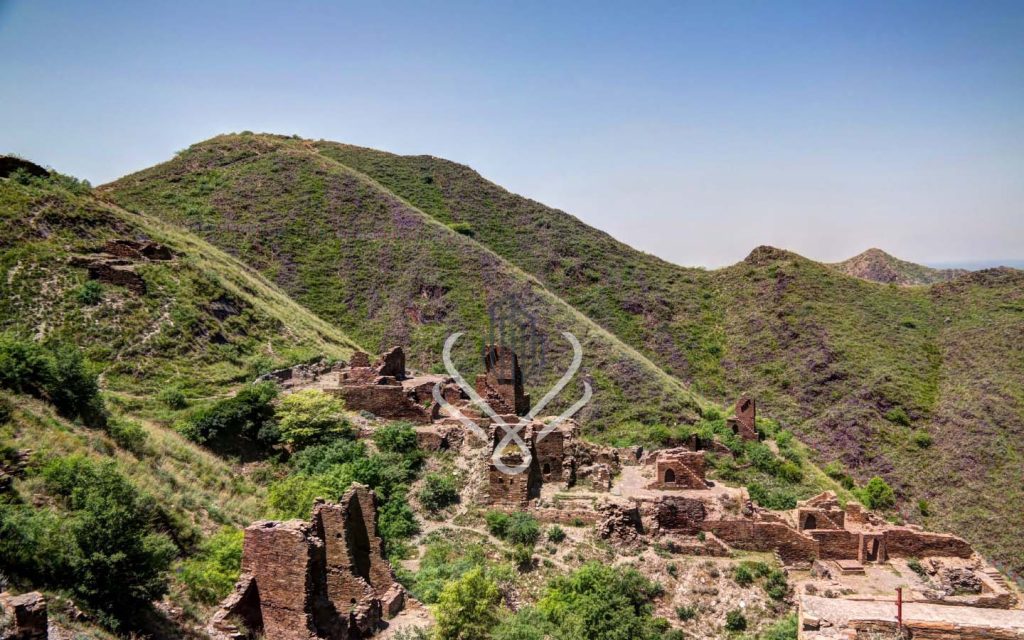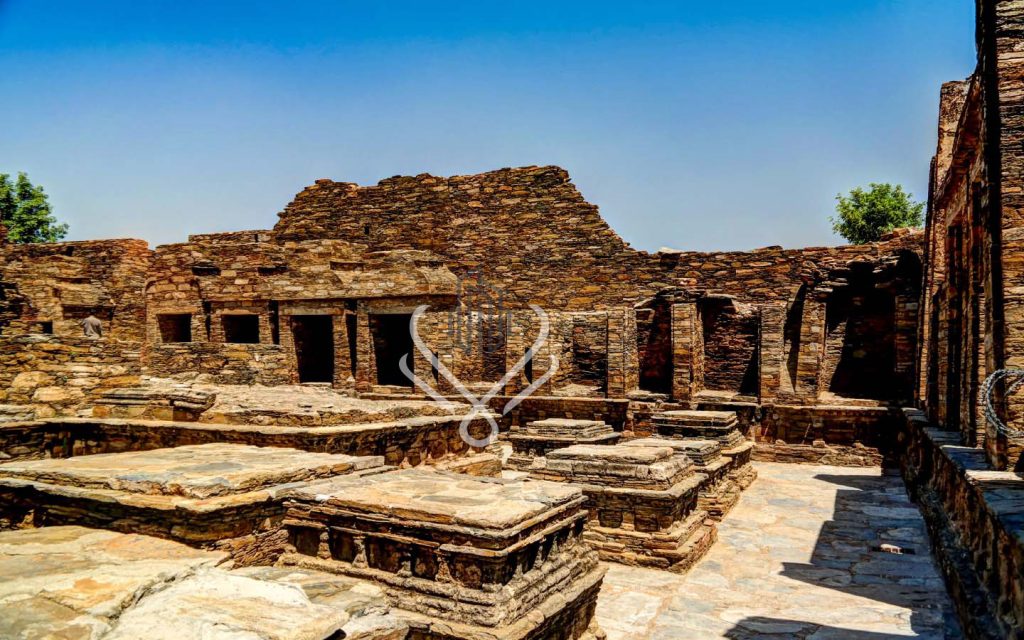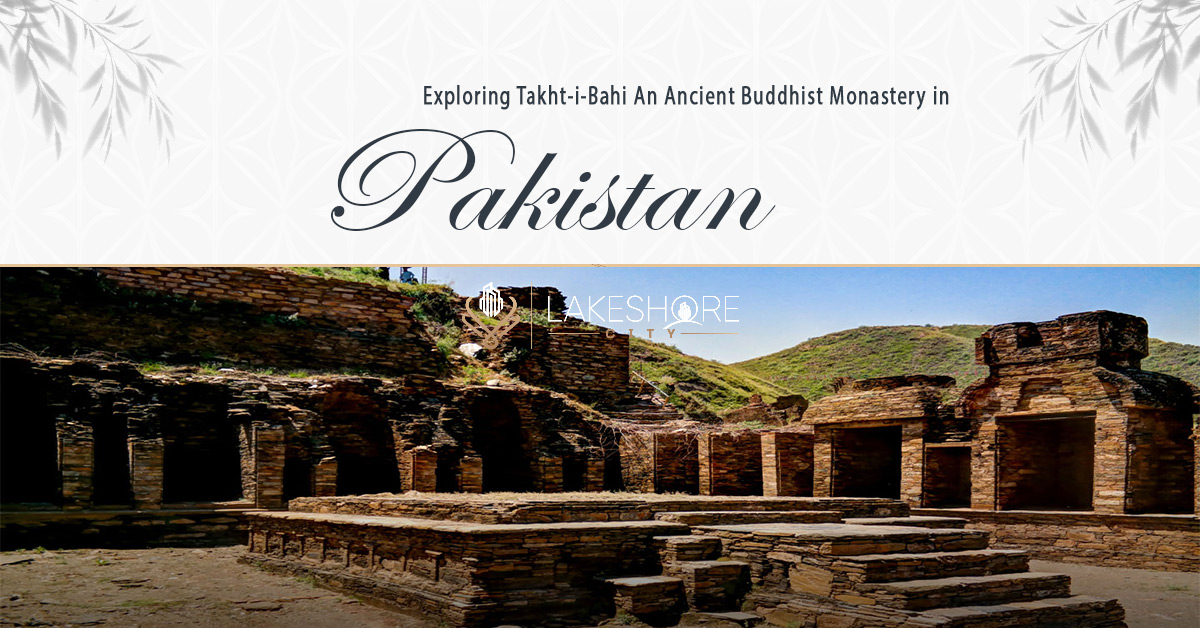The ancient ruins of Takht-i-Bahi in Pakistan are a hidden historical jewel for history buffs and archaeological site enthusiasts. This massive stone edifice, dating back to the 1st century AD, is one of the world’s best-preserved Buddhist monasteries.
It is the most impressive and extraordinary Buddhist relic found in the Kingdom of Gandhara. Archaeologists, historians, students, and tourists from around the world visit the nearby historical city of Sahr-i-Bahlol, which is close to Takht-i-Bahi in Pakistan.
According to experts, ‘Takht-i-Bahi’ means ‘throne of water springs’ in Persian. The name fits since two springs flowed on top of the monastery’s steep slope.
Takht-i-Bahi monastery, Pakistan’s oldest Buddhist ruins, is located and history.
Location of Takht-i-Bahi in Pakistan
This UNESCO World Heritage Site is near Mardan, Khyber Pakhtunkhwa.


The remains of Takht-i-Bahi Buddhist monastery are 15 kilometers from Mardan, Khyber Pakhtunkhwa. The Khyber Pakhtunkhwa capital, Peshawar, is 80 km from this stone structure.
The monastery sits on a tiny mountain at 500 feet. The same-era fortified city of Sahr-i-Bahlol is near to Takht-i-Bahi. A newer village with the same name lies nearby. The major bazaar is 2 km from the ruins.
Most of the territory around the archaeological site is used for agriculture, especially wheat, sugar cane, and vegetables.
The settlement and area were originally secluded, but Pakistan’s growing interest in Sahr-i-Bahlol and Takht-i-Bahi has led to road and parking development. Several hotels and guest houses have been opened nearby to serve foreign and domestic travelers.
History of Takht-i-Bahi in Pakistan
Takht-i-Bahi Buddhist monastery ruins date to 1 AD.
The Takht-i-Bahi inscriptions mention the Indo-Parthian Empire founder and strongest king Gondophares I. Thus, the Takht-i-Bahi Buddhist monastery is said to be 2,000 years old.
From a modest, isolated structure in the Indo-Parthian Kingdom, experts say. Over 800 years, the site became a massive and influential complex of monasteries and stupas. As Takht-i-Bahi gained popularity and importance, more monk rooms and a temple complex were erected.


This monastery was funded by nearby Sahr-i-Bahlol. The ancient city’s ruins imply Buddhists lived in the defended area. The inhabitants regularly brought food and other offerings to Takht-i-Bahi monks.
Takht-i-Bahi at the heart of Gandhara culture was undisturbed by the Huns of Central Asia’s expansionist destruction of hundreds of Buddhist temples and monasteries in the 5th and 6th centuries AD. The Buddhist complex was protected from invaders by its difficult placement.
Despite an invasion and damage, the site was abandoned in the 7th century AD. The monks left historical places due to declining donations and offerings, according to experts.
Takht-i-Bahi in Pakistan was rediscovered in the early 1900s and excavated in 1907. Buddhist statues, relics, and other artifacts showed the abandoned site was never raided.
Architecture of Takht-i-Bahi
Takhti-i-Bahi is one of the best-preserved Buddhist monasteries from that time.


The Pakistani Buddhist monastery Takht-i-Bahi has four main structures:
- The central courtyard Stupa Court
- Monastic rooms containing monk quarters, dining areas, and assembly halls
- A later-built temple complex
- A Tantric meditation monastic complex with narrow, gloomy cells.
- All Takht-i-Bahi buildings are composed of native stone and mud.
UNESCO World Heritage Sites in Pakistan
Pakistan has six UNESCO World Heritage Sites, including Takht-i-Bahi and Sahr-i-Bahlol. The prominent Pakistani Buddhist complex joined the list in 1980.
The UNESCO World Heritage Sites in Pakistan include Mohenjo-Daro, Taxila, Lahore Fort and Shalimar Gardens, Makli Necropolis, and Rohtas Fort.
Besides these sites, the government has nominated more cultural and historical monuments to UNESCO Heritage Sites, including the beautiful Shah Jahan Mosque in Thatta, Sindh.
If you’re a history fan or seeking for historical spots to visit in Pakistan, check out Lahore’s hidden historical jewels. Our list of historical forts in Pakistan can also be included in your vacation plan.
Conclusion:
Takht-i-Bahi, an ancient Buddhist monastery in Pakistan dating back to the 1st century AD, is a well-preserved historical treasure. Situated near Mardan, Khyber Pakhtunkhwa, this UNESCO World Heritage Site showcases impressive architecture, including a central courtyard, monastic rooms, temple complexes, and a Tantric meditation area. It survived centuries of history, including invasions and abandonment, and remains an extraordinary example of Gandhara culture’s influence. Along with its neighboring city, Sahr-i-Bahlol, Takht-i-Bahi contributes to Pakistan’s rich UNESCO World Heritage Sites.
Frequently Asked Questions (FAQs):
Q1. What is Takht-i-Bahi, and where is it located?
Takht-i-Bahi is an ancient Buddhist monastery in Pakistan, situated near Mardan, Khyber Pakhtunkhwa. It is a UNESCO World Heritage Site known for its well-preserved architecture and historical significance.
Q2. What is the history behind Takht-i-Bahi?
Takht-i-Bahi dates back to the 1st century AD and evolved from a modest structure to a massive complex of monasteries and stupas. It survived the ravages of history, including invasions, and was abandoned in the 7th century AD due to declining support.
Q3. What are the main structures of Takht-i-Bahi?
Takht-i-Bahi comprises four main structures: a central courtyard Stupa Court, monastic rooms housing monk quarters and assembly halls, a later-built temple complex, and a Tantric meditation monastic complex with narrow cells.
Q4. What is the significance of Takht-i-Bahi being a UNESCO World Heritage Site?
Takht-i-Bahi’s inclusion as a UNESCO World Heritage Site in 1980 highlights its historical and cultural importance, representing the rich heritage of Pakistan. It is one of several UNESCO-listed sites in the country, including Mohenjo-Daro, Taxila, Lahore Fort and Shalimar Gardens, Makli Necropolis, and Rohtas Fort.
Q5. Are there other historical sites to explore in Pakistan?
Yes, Pakistan offers a range of historical sites to explore, including Lahore’s hidden historical jewels and historical forts across the country. Visitors interested in history will find many intriguing destinations to add to their travel plans.
Our Featured Article:
Read More: Pakistan’s Growing Potential in Medical Tourism
Read More: Tourism Development Projects Approved by National Assembly
Don’t miss the chance to invest with Lakeshore! Secure your investment today by investing your financial investment with Lakeshore in the following available options like Lakeshore City, Lakeshore Club, and Lakeshore Farms.
For More updates, please Contact +92 335 7775253 or visit our website https://lakeshorecity.com/
Lakeshore City is the upcoming elite lifestyle at Khanpur Dam. Offering no parallel amenities for the members and owners of distinguished farmhouses.
Become Part of Luxurious Lifestyle
Contact: 0335 7775253



